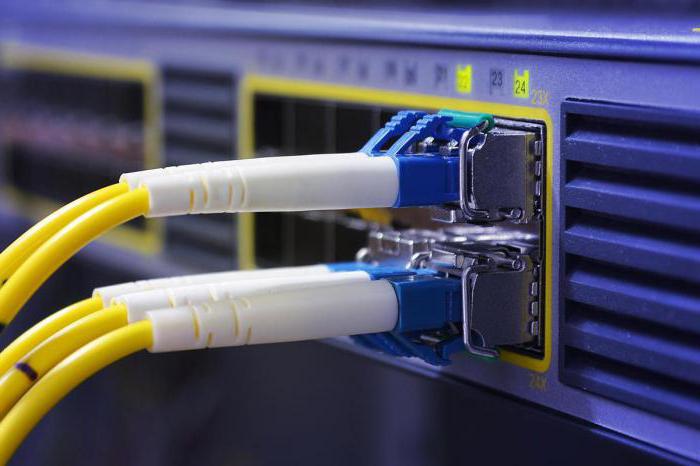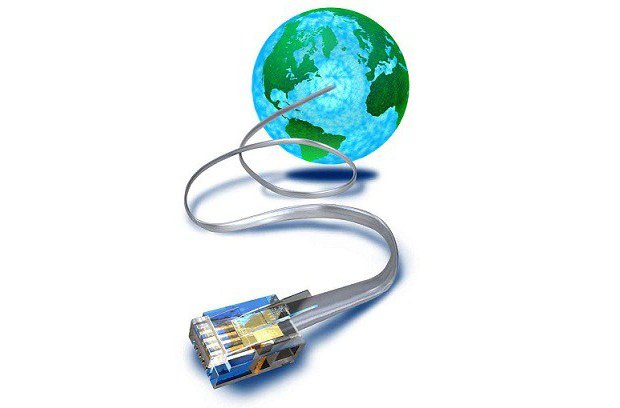Sections of the site
Editor's Choice:
- Comparison of items in 1c retail 8
- Mini test for technical thinking
- Computer science test on algorithms
- Submit an advertisement for the sale of an apartment, house and other real estate for free Submit an advertisement for the quick sale of a house
- Earning money from reading letters Reading letters but rewards for
- School diary program for computer
- Material on the topic: Concert program “With all my heart” TV show with all my heart all episodes
- Soviet acoustics Amfiton 35ac 018 Stradivarius violin amplifier Corvette
- Refinement of S90 or how to make them “sing” at minimal cost New housing for radiotehnika s90
- Some properties of operations on matrices
Advertising
|
Broadband Internet Access(abbreviated broadband) is also called high-speed access, which reflects the essence of this term - access to the Network at high speed - from 128 kbit/s and above. Today, when 100 Mbit/s is available to home subscribers, the concept of “high speed” has become subjective, depending on the needs of the user. But the term broadband access was introduced at a time when dial-up was widespread, when a connection was established using a modem connected to telephone network common use. This technology supports speeds of about a maximum of 56 kbit/s. Broadband involves the use of other technologies that provide significantly higher speeds. However, a connection, for example, using ADSL technology with a data transfer rate of 128 kbit/s also applies to broadband access. From the history of broadband technology development Around the beginning of the 2000s. dial-up technology has actively begun to be replaced by xDSL technologies (ADSL, HDSL, etc.), providing significantly higher access speeds. For example, ADSL2+ technology allows you to download data from maximum speed 24 Mbit/s, and upload at a speed of 3.5 Mbit/s. To obtain access using xDSL technology, a modem and a telephone line are also used, however, unlike dial-up access, the line is not completely occupied, that is, it remains possible to use both the telephone and the Internet at the same time. Broadband today Today, broadband Internet access is provided using various technologies - both wired and wireless. The first include the xDSL family of technologies, DOCSIS technology (Data Over Cable Service Interface Specifications - data transmission over a television cable), (data transmission to computer networks using twisted pair, optical cable or coaxial cable), family of technologies FTTx (fiber to the x - optical fiber to point X) and PLC (Power line communication - data transmission using power lines). As for FTTx, there are two basic varieties, although essentially they differ little from each other - (fiber to the building) and FTTH (fiber to the home). Today, wireless Internet access technologies, especially mobile ones, are being actively introduced and developed. Fixed wireless access is provided via satellite Internet, technology and fixed . However, many operators have already cellular communications and wireless providers offer MTS and " " ( " ), having market shares of 9.5% and 8.3%, respectively. These operators provide Internet access via both wired and wireless “third generation” technologies. For example, MTS, having acquired the company "", became a large operator of Internet access services using ADSL and ADSL2+ technologies, and. Beeline, in addition to wireless access services and mobile communications, provides the service " Home Internet» using FTTB (fiber to the building) technology. In fourth place with a broadband market share of 7.7% is the operator "", which provides Internet access services under the Dom.ru brand using FTTB technology. The Akado company closes the top five leaders in the Russian broadband market with a share of 3.8%. The operator provides Internet access using DOCSIS and Fast Ethernet technologies. The remaining Russian broadband providers occupy less than half of the market - their share is 34.6%. Penetration of broadband services According to iKS-Consulting, in the first quarter of 2011, the penetration of broadband Internet access services in Russia reached 36%, the number of subscribers in the private segment amounted to 19 million users. But it should be taken into account that in local markets local players - for example, providers in St. Petersburg or providers in Moscow - can occupy significant shares, surpassing the indicated large players in the total subscriber base. In St. Petersburg, among such players: “” (InterZet), “” (the “” brand, which, however, is now part of Rostelecom), (“SkyNet”), etc. In Moscow, such companies can be mentioned. With the development of IT technologies, Internet access has become increasingly in demand, thus creating a need for new connection methods, which is broadband Internet access. With the advent of high-speed Internet, users have more opportunities at minimal cost. What is broadband internet access?Many network users, of course, needed high-speed and high-quality communications, and best of all, unlimited ones. Every avid Internet visitor dreams of unlimited traffic and the opportunity to receive the necessary information for a small fee. Broadband access will help satisfy all the needs of Internet users; it is designed to organize access to the network and is actively used by service providers, IP telephony operators, mobile communications and other organizations. Broadband Internet access implies the ability not only to access the network at high speed, but also to transfer data from a computer. This is a fundamental difference from the Internet using a modem. The latter operates on the subscriber line principle and is limited to 56 kbit/s transmission. Broadband access is 40 times more efficient - up to 2 Mbit/s. Benefits of broadband accessMore recently, dial-up access using a modem and telephone line was the main one. But modem access is already outdated because it blocks telephone line, and this is not always convenient. High speed internet it is free from this drawback, since it does not affect the line. The main advantage of broadband access, in addition to high-speed data transmission, is a stable connection to the network and the possibility of “two-way communication”, which allows you to receive and send data at high speed in both directions.
Providers may also offer DSL using digital telephone communication, this method may improve Internet speed, but it is based on the use of the same telephone lines with copper wires. Its advantage lies only in the parallel operation of telephone communications and the Internet. Broadband Internet access technologies are based on the use of which performs a huge variety of other functions, and satellite communications. At the moment, this is the most promising and reliable method of data transfer. Convenience of high-speed InternetThe ability of an Internet user to receive and transmit data of various contents at high speed makes life much more convenient. It is impossible to list all the possibilities of broadband access; the main ones are online shopping, applications, ticket booking, online maps and much more. Broadband access services include digital television services, voice data transmission, and remote data storage. Broadband access, without a doubt, can transform the entire Internet. The applications of this access that will help unlock its full potential have yet to be explored.
Types of broadband access connection
Types of broadband Internet access1. Broadband Internet connection via VSAT. This is an access method in which user equipment is connected to a small satellite earth station, which is connected to high-speed channels, through which data is exchanged with the satellite on In hard-to-reach places, this type of Internet is almost the only way to communicate with the world. 2. Broadband Internet access using 3G/4G technology. 4G Internet is cheaper than the previous connection, so it is more logical to choose it, if, of course, such a choice is available. If there is either the first option or the second, then you need to be content with the access that is available.
It is irrational to install networks with 3G/4G access at a distance of more than 20-30 km from residential areas, so areas that are sparsely populated are forced to make do with VSAT. 3. High-speed Internet with access via fiber-optic communication lines. Access through a fiber-optic communication line uses e/m radiation of the optical range as a signal carrier, and optically transparent fiber as guide systems. The main advantage of fiber-optic communication lines is that the lines are not subject to electronic interference and are inaccessible for unauthorized use. Prospects for broadband accessBroadband Internet access certainly has exciting prospects because Internet users are increasingly in need of high-speed access. Cable and telephone networks are used for this purpose. On the market Russian Federation The most common and promising method of broadband access is ADSL technology, for which telephone networks are used. By turning to this technology, the user can use the Internet while having an unoccupied telephone line.
However, the largest share of the high-speed access market is occupied by ETTH home networks. A fiber-optic backbone is supplied to the user, and Ethernet switches are installed. Compared to ADSL, this method requires more time and money to install indoors, but it provides users with the highest speed. Broadband access as a corporate connectionWhy is broadband access essential for solving business problems? Because it provides guaranteed high speed, which saves time. And this is very important point in modern world. Not only speed is an indicator for which you should choose broadband access. It is very important to pay attention to quality. Broadband access is not subject to absolutely any connection interruptions, and other problems that users of other types of network connections had to face are also eliminated. This also preserves nerve cells.
High-speed Internet is indispensable in the work of companies; it will help organize uninterrupted work not only for each individual employee, but also for the company as a whole, and this is a really important plus. Thus, we can conclude that broadband access plays an irreplaceable role in the issue of organizing high-speed Internet access. Whether used by individual subscribers or corporations, broadband is the future, and it's hard to argue with that. Broadband is the general name for technologies that provide an always-on (non-session) connection to the Internet. For example, via a telephone line (ADSL); cable television (DOCSIS). In addition, there is Fast Ethernet technology (information transfer speed reaches 100 Mbit/s). Until recently, one of the main methods of connecting to the Internet was dial-up access, which was carried out over a telephone line, completely occupying it for the duration of the connection. Broadband Internet provides data exchange speeds many times greater than with dial-up access and does not “hijack” the telephone line. That is, the concept of broadband Internet is directly related to the speed of data transmission and therefore it is often called high-speed. In addition to the high speed of information transfer, it provides a stable, continuous connection to the network, and also provides the so-called “two-way” communication, which consists in the ability to receive and upload data at equally high speeds. Thanks to broadband Internet access, the user can receive digital television services over the Internet, voice data services (IP telephony) over any distance at cheap rates or even free of charge, as well as the possibility of remote storage of large volumes of data. There are two types of connection
Broadband Internet in Russia has excellent prospects for distribution, since an increasing number of users over time come to the need for high-speed access to the network. For its distribution, cable television networks and telephone networks are used. On Russian market, a more promising way to distribute broadband Internet is ADSL technology through regular telephone networks. Using ADSL technology, the user gains access to the Internet, and the phone remains available for voice communication. Another common scheme for providing this type of Internet is the so-called ETTH (Ethernet To The Home) home networks, which occupy a large market share. A fiber-optic backbone is brought directly to consumers (home, office) and Ethernet switches are installed. Next, individual users are connected via standard twisted pair cable. Unlike ADSL, this connection method takes Extra time and the costs of wiring inside the building, but in comparison with ADSL technology or cable channels it provides the best connection speed. One of the serious advantages that broadband Internet provides today is the ability to watch digital television. The technical conditions necessary for the operation of television call into question the ability of ADSL technology to still for a long time remain competitive in the provision of broadband Internet. One thing is clear: broadband Internet significantly expands the boundaries of consumer capabilities, and for providers this means a battle of technologies and a fight for users. The Internet boom of 1998-2001 took investors' money without return, but the optical fiber laid for this money did not go away. The user has experienced fast Internet, and the broadband access market is now growing much faster than other sectors of the telecommunications industry. Broadband access, also known as broadband access, formally starts at 128 Kbps. It is at this speed, for example, that Russian schools are connected to the Internet. It would not be a big mistake for the sake of simplicity to consider all Internet access, except for a slow dial-up telephone connection, to be broadband. The point, however, is not the data transfer speed as such, but the fact that with it the user has fundamentally new opportunities. Such as digital television over the Internet (IP TV), cheap - even free - and distance-independent voice communication (VoIP), the ability to remotely store large amounts of data, etc. Thanks to broadband networks and the services based on them, a special term arose - TMT (Technology, Media & Telecommunications). In Russia, the prospects for TMT development are excellent. According to Fitch Ratings, broadband penetration is only 1.3%, and personal computers- 20%. Each of the users of these computers will sooner or later be a consumer of broadband access services. Technologies, market, players The catalyst for the development of broadband access as a mass service in Moscow, and in Russia too, was the Stream project (2004, MTU-Intel company). Thanks to Stream with its cheap traffic to providers Ethernet networks(aka the so-called home networks) and cable operators had to reduce their prices, and the process of joining fast internet went to the people. In a variety of ways. The domestic specificity of the broadband access market is, in particular, that cable television networks have not become widespread enough to be used to connect households to the Internet. Although there are cable networks. The main player here is Comkor TV with the Akado network. Comcor has a developed fiber-optic infrastructure for transmitting digital traffic in Moscow and the Moscow region and serves third companies, but also sells broadband access at retail, having launched its own mass TMT services (IP TV, Internet radio, broadband access). Another major participant in the Moscow broadband market is the Teleinform company, which, like Comkor, is part of the Renova Media holding. Teleinform has been operating since 1991 and provides services in the South-East Administrative District of Moscow, where it provides almost 100% cable network coverage. But the most promising in the Russian mass market, as shown by the success of Stream, is ADSL technology, widespread in Europe and Southeast Asia, which makes it possible to provide broadband access through regular analogue telephone networks (the phone remains available for voice transmission). The provider is required to install special equipment on the PBX - ADSL concentrators, and the subscriber is required to buy an ADSL modem. The hubs connect to a high-speed optical network backbone, giving the consumer truly high-speed access. In Russia, the telephone infrastructure is almost completely owned by OJSC Svyazinvest, and it is almost impossible for other companies to approach it. This is understandable - Svyazinvest itself provides Internet access services via ADSL, planning to increase its share of the broadband access market in the Russian Federation from the current 30% to 50% over the next five years. The mentioned Stream project owes its success to the fact that the company developing it is included, together with the Moscow City Telephone Network, in Comstar-UTS. In St. Petersburg, in addition to North-West Telecom (a division of Svyazinvest), Web Plus and Peterstar operate using ADSL technology. In the regions, Svyazinvest rules the ADSL ball. Finally, there are also home networks. Experts use the term ETTH (Ethernet To The Home) to refer to them, and this is correct - it is difficult to call it a home network, for example, the Corbina Telecom network with more than 200 thousand subscribers. Although small (household) networks still own a significant part of the market, especially in the regions. Even in Moscow with its Stream (36% broadband), they retain more than 30% of users. Of the major players, besides Corbina, we should mention Centel (the name of the service provided is QWERTY). As with ADSL or cable networks, ETTH networks rely on fiber optic lines. TO residential building or an optical backbone is supplied to a business center, Ethernet switches are installed in the building itself, allowing connections via standard twisted pair cable. This connection method, unlike ADSL, requires additional costs and time for the construction of wiring inside the building, but provides best speed connections compared to ADSL or cable networks. The subscriber is provided with up to 100 Mbit/s, and if necessary, the provider can increase the speed to 1 Gbit/s by replacing only the switch. The emphasis on speed to the subscriber and the possibility of increasing it is not in vain: the main service currently advertised by most broadband operators is no longer just access to the Internet, but digital television. Television as the engine of progress in communication systems IP TV requires a bandwidth of 2-4 Mbit/s, and with the advent of high-definition television (HDTV) a minimum of 8 Mbit/s will be needed. This is a major problem for ADSL technology. When subscribers are more than 1.5 km away from the telephone exchange or on low-quality copper lines, implementation ADSL technologies 2/2+, capable of “overclocking” to 24 Mbit/s, is not possible everywhere. In modern apartments there are several televisions, and at the same time a family can watch different programs- so for each TV channel you need to allocate a bandwidth of 2 to 8 Mbit/s. This even puts a theoretical limit on the development of ADSL networks. That is why the main players in the ADSL market are simultaneously starting to deploy access to their network via ETTH - to transfer existing clients to new technology much better than giving them to competitors. Activity in the IP TV services market is fueled by government plans for a widespread transition to digital TV in Russia by 2015. Most TV channels are ready to switch completely to digital broadcasting; the main limiting factor is the lack of access networks throughout the country. In addition to TV and Internet access, providers also offer so-called VPN networks (a technology that allows you to create corporate network“on top” of the public network) and video conferencing. Private users can be offered video surveillance of the apartment, network data storage, printing photos from home in the provider's offices, gaming services, etc. In Moscow, the battle for subscribers has already begun, and in earnest. The market is close to saturation, competition is extremely strong. Providers call, luring, clients of their competitors. In the regions, the market is not so dense, and that is why large Moscow players are attacking it. This does not mean that there is no one in the regions to resist them. Eat. For example, R-Telecom, which operates in 15 cities of Russia and provides TV and Internet, or Kazan Teleset. And also, of course, Svyazinvest, which is actively investing in the development of infrastructure and the provision of new services. Suffice it to remember that one of the first successfully operating IP TV networks in Russia was the project of the Krasnodar branch of South Telecom, a regional subsidiary of Svyazinvest. Without wires In addition to traditional cable systems for providing broadband access, they are now actively developing wireless network. One of the world's largest WiFi projects is Golden WiFi in Moscow (Golden Telecom). This is over 7 thousand access points throughout Moscow, which cover almost the entire center. Starting this summer, Golden WiFi networks in Moscow and St. Petersburg are being united. We must take ours and cellular networks. For now, GSM operators are outside the IGL market, but when it comes to introducing third generation (3G) technologies, the situation will change. In the meantime, SkyLink, the operator of an alternative GSM standard, CDMA, thanks to EVDO technology, provides its customers with Internet access at speeds of up to 2.4 Mbit/s. The coverage area of this service is Moscow, St. Petersburg, part of the Leningrad region, Yekaterinburg and Voronezh. Let us also mention an exotic method of delivering traffic - broadband access through power lines. “Internet from a wall outlet” at speeds up to 200 Mbit/s. Impressive bandwidth to cover the entire spectrum modern services. This technology is most often called Power Line Communications. Its main advantage is obvious - as in the case of ADSL, there is no need to spend money on wiring communication lines inside the building. A well-known and working project of Power Line Communications is “Spark” from JSC “Electro-com”. Implemented in several districts of Moscow, as well as in Nizhny Novgorod. Broadband Internet access- Broadband access (BBA) high-speed access to Internet resources (as opposed to dial-up access using a modem and public telephone network)... Source: Order of the Moscow Government dated October 11, 2010 N 2215 RP About... ... Official terminology The methods and means by which users connect to the Internet. Contents 1 History 2 Types of transmission media with the Internet ... Wikipedia The Internet in Finland is one of the most developed in the world. Contents 1 History 2 Broadband Internet 3 Internet providers ... Wikipedia - (sometimes just a provider; from the English internet service provider, abbreviated ISP internet service provider) an organization that provides Internet access services and other Internet-related services. Basic services To basic services... ... Wikipedia - (Russian-language Internet, Russian Internet, also RuNet) part of the Internet in Russian. Distributed to all continents, including Antarctica, but most concentrated in the CIS and, especially, in Russia. Domains with a high share... ... Wikipedia Internet access in Sweden for private users is mainly organized through cable channels with speeds from 128 kbit/s to 100 Mbit/s and via ADSL. There are also networks connected via Ethernet over copper and fiber optic lines. The largest... ... Wikipedia There are many intermediary companies in Belarus that provide Internet access services such as individuals, as well as corporate clients. On February 1, 2010, the President of the Republic of Belarus signed “Decree No. 60 “On measures to... ... Wikipedia Ireland's largest telephone company, Eircom, began rolling out broadband Internet access networks in 2002. Currently, there are more than 85 Internet service providers in the country. Residents of the country have a wide... ... Wikipedia |
| Read: |
|---|
New
- Mini test for technical thinking
- Computer science test on algorithms
- Submit an advertisement for the sale of an apartment, house and other real estate for free Submit an advertisement for the quick sale of a house
- Earning money from reading letters Reading letters but rewards for
- School diary program for computer
- Material on the topic: Concert program “With all my heart” TV show with all my heart all episodes
- Soviet acoustics Amfiton 35ac 018 Stradivarius violin amplifier Corvette
- Refinement of S90 or how to make them “sing” at minimal cost New housing for radiotehnika s90
- Some properties of operations on matrices
- "Skyrim": The Elder Scroll











